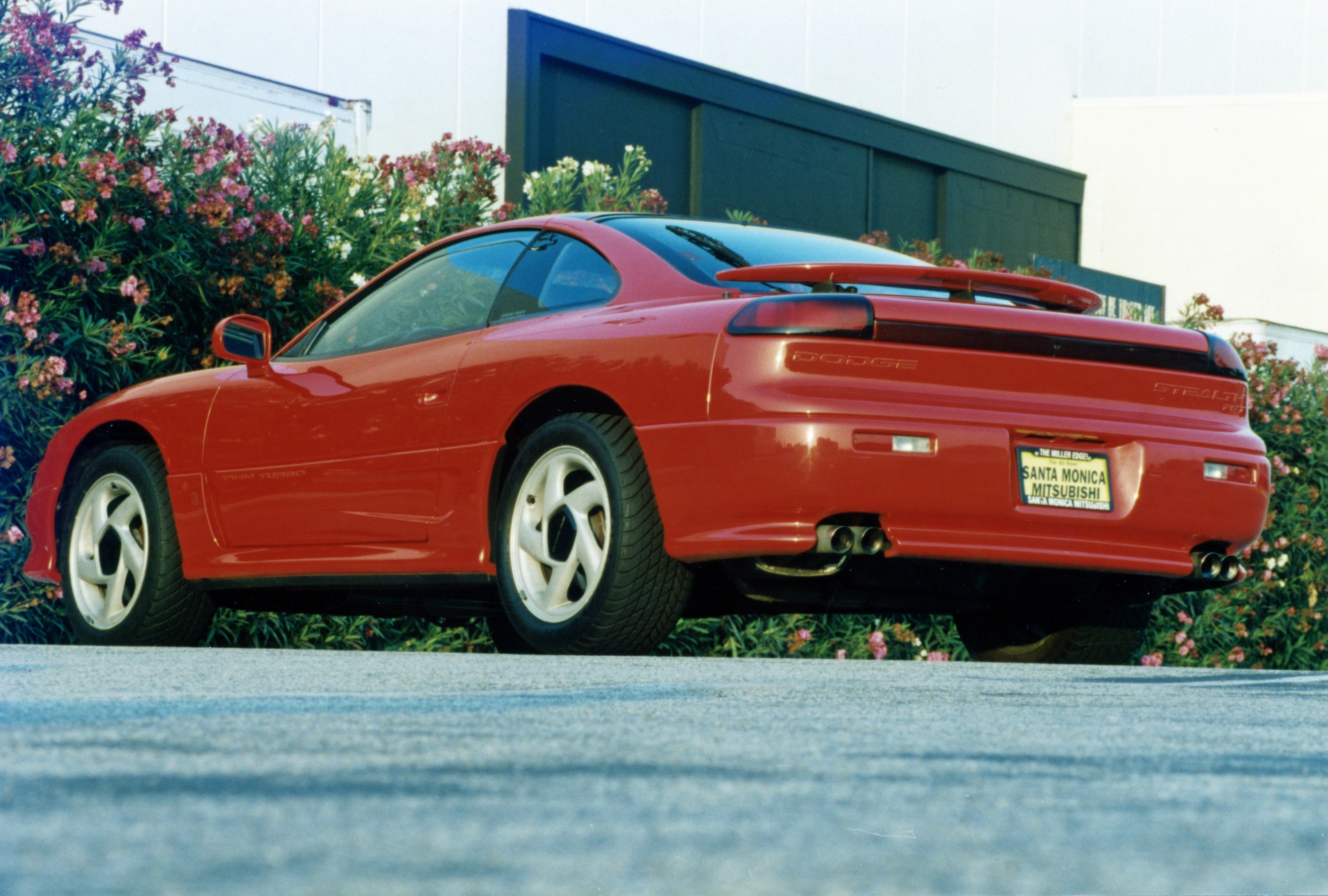My journey with cars has taken many exciting turns, but few experiences match the thrill of owning a 1991 Dodge Stealth R/T Twin Turbo. As a project vehicle during my time at Super Street magazine, this car wasn’t just transportation; it was a deep dive into the world of 90s performance and a hands-on lesson in the realities of high-tech sports cars.
Before the Stealth, my daily drivers from 1992 to 1996 were a pair of turbocharged, front-wheel-drive Dodge models with four-cylinder engines. By the fall of 1996, I was ready for a significant step up in performance. That’s when I found myself behind the wheel of a 1991 Dodge Stealth R/T Twin Turbo. From its initial debut, the Stealth had captivated me. In the early 90s, its specifications were the stuff of automotive dreams: twin turbos, 300 horsepower, all-wheel drive, and an adjustable suspension. Of course, the Dodge Stealth’s close relationship with the Mitsubishi 3000GT was well-known, and I appreciated both models for their impressive performance figures and striking aesthetics. Even now, decades later, I still admire their design and presence.
Acquiring the Stealth R/T Twin Turbo: A Deal with a Hidden Cost
I purchased my 1991 Dodge Stealth R/T Twin Turbo from a used car dealership in Santa Monica. With 58,000 miles on the odometer and a price tag of $12,000, it seemed like a solid deal for a five-year-old performance car boasting the Stealth’s advanced technology. However, I soon discovered a critical piece of information: the Dodge Stealth R/T Twin Turbo maintenance schedule calls for a timing belt replacement around the 55,000-mile mark. Unbeknownst to me, this crucial service had not been performed. Less than a week after driving it home, the timing belt failed catastrophically, leading to a devastating engine failure where pistons collided with valves, wrecking the engine’s top end.
The Lifesaving Warranty and Unexpected Repairs
In a stroke of fortunate foresight, during that initial week of ownership, I invested $1,400 in a factory Dodge warranty for the Stealth. The complexity of its technology genuinely concerned me, prompting me to seek protection. Thank goodness I acted swiftly on that warranty purchase. The engine damage necessitated a lengthy two-month stay at the Santa Monica Dodge dealership. During the repair process, the dealership also addressed the clutch and suspension system. When I finally got the Stealth back, it felt revitalized, almost brand new. While the warranty covered the major engine repairs, I still faced a bill of approximately $2,000 for the clutch and suspension work, as these items were not included in the warranty coverage. Despite this out-of-pocket expense, the $1,400 warranty effectively saved me an estimated $4,000 in parts and labor that would have been required to rebuild the Dodge Stealth R/T Twin Turbo engine without it.
Upgrades and Track Days: Pushing the Stealth’s Performance
For the next two years, the Stealth became my regular vehicle, and I indulged my passion for automotive modification by installing a range of upgrades from the HKS catalog. Working at Super Street provided the perfect platform to document these enhancements, and I featured many of them in magazine articles. Among the modifications were a boost controller, a blow-off valve, and other components that are now a bit hazy in my memory. Everything progressed smoothly, with noticeable performance gains, until I decided to introduce a nitrous oxide kit into the equation. I limited nitrous usage primarily to street driving. However, the true test came at an import race event at Famoso Dragstrip near Bakersfield in May 1998. Pushing the car harder with nitrous on the drag strip resulted in a blown piston ring.
Warranty to the Rescue Again, and Farewell to the Stealth
Once more, the factory warranty proved invaluable, covering the costs of another engine rebuild. This time, however, the repair process extended to around six months. By the time the Stealth was roadworthy again, my professional path had shifted. I had transitioned from Super Street magazine to a consumer-focused website, which came with a fleet of press cars for daily driving. The Stealth, consequently, became more of a garage fixture and an added insurance expense than a necessity. Within a few months of its return from the repair shop, I decided to sell it. The buyer was from Santa Fe, New Mexico, and after flying into LAX, we completed the transaction at a local bank. He contacted me after his drive back to Santa Fe, expressing his excitement about the car’s performance and its ability to attract attention. By this time, the Stealth was riding on aftermarket 18-inch Enkei wheels and Toyo tires, which undoubtedly enhanced its visual appeal.
The Dodge Stealth R/T Twin Turbo Legacy
Even today, I regard the Dodge Stealth R/T Twin Turbo era (and its Mitsubishi 3000GT VR4 counterpart) as representing some of the most visually stunning supercars of the 1990s. However, their considerable weight (around 4,000 pounds) and the accuracy of my initial concerns about technological complexity impacting long-term ownership costs remain valid points. The potential expenses associated with maintaining such advanced systems as they age are indeed something to consider. Despite these potential downsides, the Dodge Stealth R/T Twin Turbo remains a memorable example of 90s automotive ambition and style.

